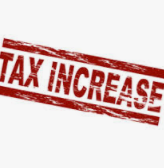
You might receive an IRS Notice CP2000 (“CP2000”) in the mail. The IRS issues these particular notices to taxpayers based on discrepancies between tax return reporting and third-party reporting. Taxpayers must pay attention to these notices, as well as others, and understand their rights and responsibilities with respect to each. Our firm has previously described other notices: You Received an IRS CP518 Notice, Now What?; You Received an IRS CP504 Notice, Now What?; You Received an IRS CP15 Notice (re: Form 3520 Penalty), What Now?; and You Received an IRS LT11 Notice (or Letter 1058), Now What?. This article discusses the CP2000 and how a taxpayer should respond.
What is the CP2000?
Generally, a taxpayer receives the CP2000 from the IRS when his/her tax return does not match certain information reported by other third parties (e.g., employers, financial institutions, etc.). The IRS utilizes an automated system to compare the third-party information to a taxpayer’s tax return to identify potential discrepancies.[1] After a discrepancy is identified and reviewed, the IRS issues the CP2000, proposing certain adjustments to a taxpayer’s income, deductions, credits, and/or payments. The CP2000 prominently displays the following language at the top of page 1: We are proposing changes to your 2024 Form 1040 tax return. This is not a bill.
The IRS describes (1) the purpose of these notices, (2) what a taxpayer needs to do, and (3) what kinds of property can be levied as follows:
What this notice is about
The income or payment information we have on file doesn’t match the information you reported on your tax return. This discrepancy may cause an increase or decrease in your tax or may not change it at all. The notice explains what information we used to determine the proposed changes to your tax return. . . .
What a taxpayer needs to do
Read your notice carefully. It explains the information we received and how it affects your tax return.
Complete the notice response form and state whether you agree or disagree with the notice. The response form explains what actions to take. (Your specific notice may not have a response form. In that case, the notice will have instructions on what to do). You can return your response by:


















Recent Comments